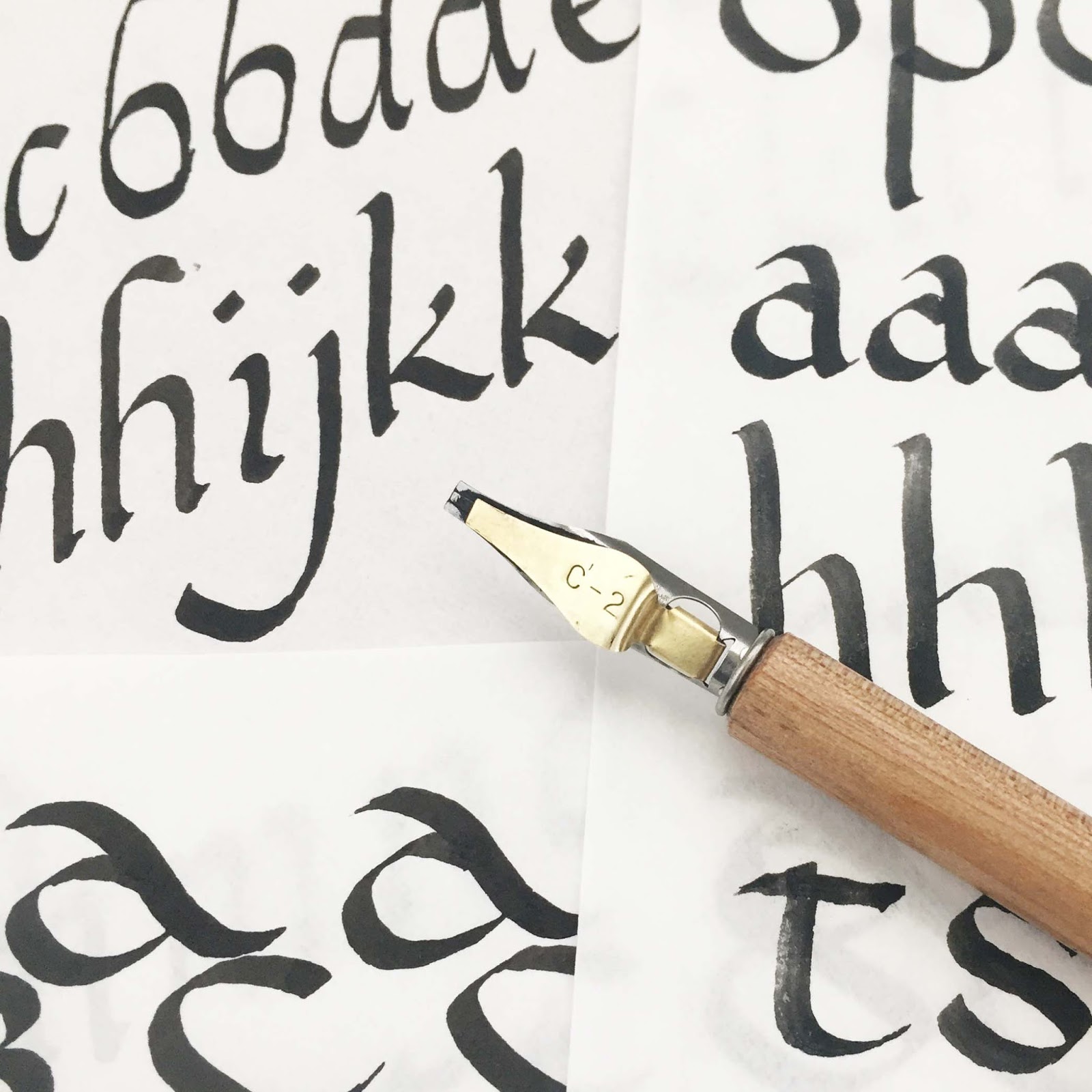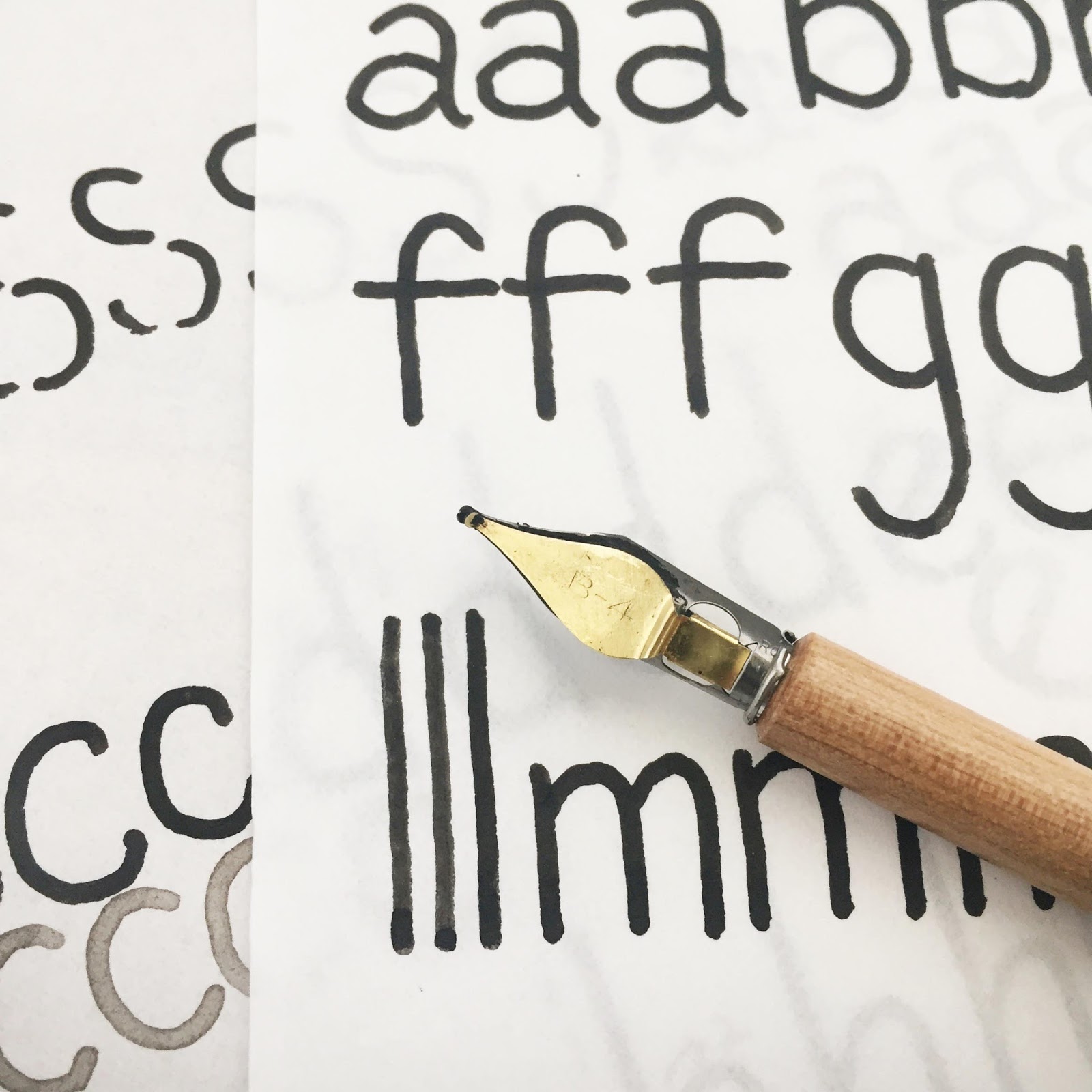I finally have my ornamental letter print finished and listed in the On Good Roads Etsy shop! I thought I would walk through the process of making the letter to give a better understanding of how printmaking works.
The word printmaking covers a wide array of fine art techniques in which an artist prints his or her work by hand or on a press. It is NOT printed digitally from a computer file on a modern printer. It is actually a hand-crafted piece of art much like an original painting or drawing...only it's usually possible to make several copies of the same thing...almost like a potter making a mould for a ceramic cup. Some types of printmaking include etchings, dry points, monoprints, woodcuts, silkscreen, and lithography.
In my case, I created a type of print called a linocut. A linocut is created from a linoleum block which is used as the inking plate to transfer the image. A crucial first step in making any art is to create a sketch of your idea. (See my sketching process for this print in my previous post.) I probably worked through about 10 different sketches for my ornamental letter A before settling on a "final draft." I don't always do sketches for everything I make, but I like to be prepared when I'm making a print because there is a lot of work involved, and I want to make my time and resources worth the effort.
My final sketch on top of white copy paper to help me visualize what size paper to print on.
A look at the deckled/hand-torn edges of the Rives BFK paper.
Once my design was finalized and I knew what dimensions I needed to make my print, I transferred my image onto a linoleum block. I like using the battleship grey linoleum. In this case I used an unmounted block and cut it to size and mounted myself to a piece of leftover masonite/hardboard. Doing this also cuts down on the thickness and weight of the block (which is nice when it comes to storage) instead of buying one already mounted (which is also more expensive). Before transferring an image to any printmaking plate/block it needs to be reversed so that when you print it on paper it will be right-reading just like with any kind of stamp.
Transferring my design to the mounted linoleum using carbon paper.
The transferred design (in reverse) ready to carve!
The carved design!
Lining up the block in my handmade jig to set it for paper registration.
Next I set up my printing station. (You'll have to use your imagination to picture this as I didn't snap any photos this time.) I use black oil-based etching ink because it allows more versatility for a print. Because etching ink is typically more viscous, adding some burnt plate oil helps to get it to the proper consistency for block printing. Ink consistency may also need to change based on the type of paper you use or depending if you put your paper in a bath before printing.
I have a glass pane where I roll out the ink with a speedball brayer. A putty knife is helpful in moving ink about on the pane as well. It's handy to have some rubber gloves, old phone book pages, vegetable oil, laundry detergent, and an old rag on hand for keeping the station clean and tidy while printing. That's one of the most difficult parts as you want your final product to stay as beautiful as possible.
I have a glass pane where I roll out the ink with a speedball brayer. A putty knife is helpful in moving ink about on the pane as well. It's handy to have some rubber gloves, old phone book pages, vegetable oil, laundry detergent, and an old rag on hand for keeping the station clean and tidy while printing. That's one of the most difficult parts as you want your final product to stay as beautiful as possible.
The inked block before printing.
Once the block is inked, I place it into my jig. Then I line my paper up face down according to my registration pins. The paper lays on top of the inked block, and I place a piece of newsprint over that and start to hand-press the paper together with the block. I also use a Japanese barren and an old wooden spoon to rub over the paper to get a solid transfer. At times I will peel back a portion of the print to see if it needs more work. If it does I gently lay it back down to continue pressing. When I get it to a point where I like it, I carefully peel the paper off the block being careful not to smudge up any part of the paper.
Seeing the final product is always magical. I find printmaking be an art form in two ways. First, an artist needs to create an idea for a piece of art. Second, the artist needs to convey that idea in the printing method and with perfect execution. The actual printing process takes as much skill and practice as it does to come up with an idea as an artist. But that is why I find printmaking to be a very satisfying art...it's a challenge in more than one way.























